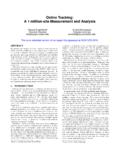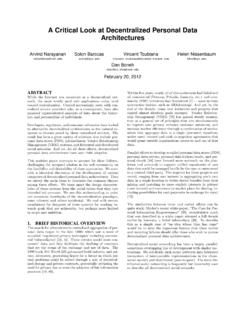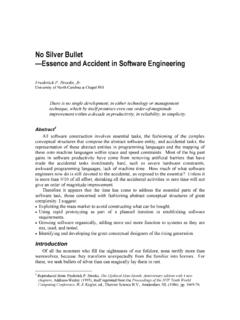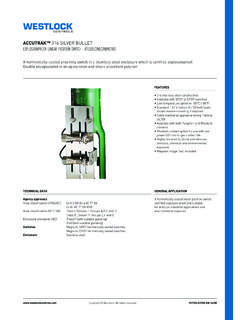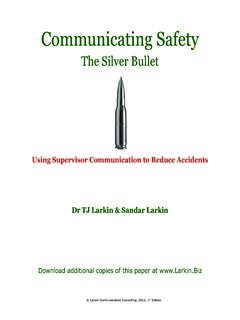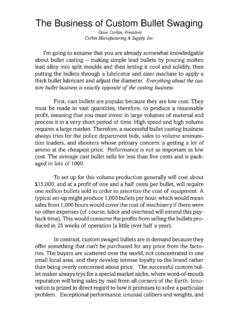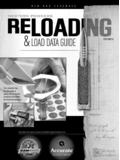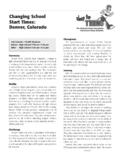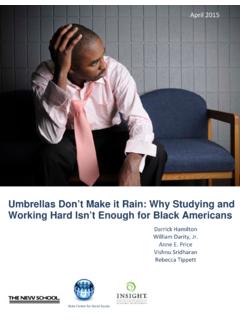Transcription of No silver bullet: De-identification still doesn't work
1 No silver bullet : De-identification still doesn 't work Arvind Narayanan Edward W. Felten July 9, 2014 Paul Ohm s 2009 article Broken Promises of Privacy spurred a debate in legal and policy cir-cles on the appropriate response to computer science research on In this de-bate, the empirical research has often been misunderstood or misrepresented. A new report by Ann Cavoukian and Daniel Castro is full of such inaccuracies, despite its claims of setting the record straight. 2 We point out eight of our most serious points of disagreement with Cavoukian and Castro. The thrust of our arguments is that (i) there is no evidence that De-identification works either in the-ory or in practice3 and (ii) attempts to quantify its efficacy are unscientific and promote a false sense of security by assuming unrealistic, artificially constrained models of what an adversary might do.
2 1. There is no known effective method to anonymize location data, and no evidence that it s meaningfully achievable. A 2013 study by de Montjoye et al. showed that 95% of mobility traces are uniquely identifiable given four random spatio-temporal Cavoukian and Castro downplay the privacy impact of this study on the grounds that the authors didn t actually re-identify anyone, and that obtain-ing four spatio-temporal locations about individuals is hard. We disagree strongly. First, many users reveal just such information on social networks. Second, Cavoukian and Castro ignore another finding of the study, namely that over 50% of users are uniquely identifiable from just two randomly chosen points.
3 The study notes that these two points are likely to correspond to the individual s home and work locations. The uniqueness of home/work pairs is corroborated by other re- identification 1 Paul Ohm, Broken promises of privacy: Responding to the surprising failure of anonymization, UCLA L. Rev., 57, 1701 (2009). 2 Ann Cavoukian & Daniel Castro, Big Data and Innovation, Setting the Record Straight: De-identification Does Work (2014), available at 3 At the risk of being pedantic, when we say that De-identification doesn 't work we mean that it isn't effec-tive at resisting adversarial attempts at re- identification . 4 Yves-Alexandre de Montjoye et al.
4 , Unique in the Crowd: The privacy bounds of human mobility, Scien-tific Reports 3 (2013). 5 Hui Zang & Jean Bolot, Anonymization of location data does not work: A large-scale measurement study, in Proc. 17th Intl. Conf. on Mobile Computing and Networking 145-156 (2011); Philippe Golle & Kurt Partridge, On the anonymity of home/work location pairs, Pervasive Computing 390-397 (2009). You don t have to be an expert to understand how to identify a person given their home and work locations. People who know you will probably know where you live and work; and people who don t know you can buy that information from a data broker. Either way, they can find your record in a database that includes home/work location pairs.
5 Let s be clear about why the authors of the study didn t actually re-identify anyone: because they didn t set out to. The study addressed the issue of uniqueness of mobility patterns, which is a scientific question about human behavior. On the other hand, the percentage of individuals that are re-identifiable is not an inherent property; it is determined by the datasets that are available at a particular point in time to a particular adversary. Cavoukian and Castro admit that there is no known standard for de-identifying mobility data and it is admittedly very difficult to de-identify mobility traces, while maintaining a sufficient level of data quality necessary for most secondary purposes.
6 Indeed, a key finding of the de Montjoye et al. study is that the main technique one might hope to use making the data more coarse-grained has only a minimal impact on uniqueness. Although they chose this as their leading example, Cavoukian and Castro don t suggest how one would go about de-identifying such a data set; they don t point to any literature asserting that it can be de-identified; and they don t even claim that it is de-identifiable in principle. 2. Computing re- identification probabilities based on proof-of-concept demonstra-tions is silly. Turning to the Netflix Prize re- identification study,6 Cavoukian and Castro say: the researchers re-identified only two out of 480,189 Netflix users, or per cent of users, with confi-dence.
7 This is an unfortunate misrepresentation of the results considering that the Netflix paper explic-itly warns against this: Our results should thus be viewed as a proof of concept. They do not imply anything about the percentage of IMDb users who can be identified in the Netflix Prize dataset. Cavoukian and Castro seem to fundamentally miss the point of proof-of-concept demonstra-tions. By analogy, if someone made a video showing that a particular car security system could be hacked, it would be an error to claim that there is nothing to worry about because only one out of 1,000,000 such cars had been compromised. The IMDb re- identification was not even the most important result of the Netflix study.
8 The study shows in detail that if someone knows just a little bit about the movie preferences of a user in the Netflix dataset (say, from Facebook or a water-cooler conversation), there s an upwards of 6 Arvind Narayanan & Vitaly Shmatikov, Robust de-anonymization of large sparse datasets, in Proc. 2008 IEEE Symp. on Security and Privacy 111-125 (2008). 80% chance of identifying that user s record in the dataset. Predictably, Cavoukian and Castro ignore all this. Again, Cavoukian and Castro don t suggest or cite any method for de-identifying the Netflix da-taset or even claim that it is de-identifiable in principle. 3. Cavoukian and Castro ignore many realistic threats by focusing narrowly on a particular model of re- identification .
9 Cavoukian and Castro have an implicit model of re- identification in mind that drives their view-point. They don t explicitly state it, but it is important to make it clear. First, they limit them-selves to re- identification studies that use only free, already existing, publicly available auxilia-ry data. They mostly ignore the possibility of re- identification by a spouse, friend, nosey neigh-bor, or investigator based on specific knowledge about the victim, as well as a data-broker apply-ing re- identification based on their existing datasets to enrich their Second, they consider only large-scale re- identification that has a high probability of identify-ing each person, as opposed to, say, deanonymization of a targeted individual by a rival or politi-cal opponent, where the analyst may follow up on leads generated by re- identification , or oppor-tunistic re- identification by an adversary who will take advantage of whatever portion of the population they can re-identify.
10 We invite you to judge for yourself whether it is worth worrying about attacks that can re-identify targeted individuals, or that can re-identify (say) only 1% of the population over 3 million people. Re- identification of Governor Weld s Health Record A good example of the authors narrow, unrealistic threat model is their discussion of Latanya Sweeney s famous demonstration that she could re-identify the medical record of the then-governor of Massachusetts, William Weld. Sweeney started with a released medical database that included each patient s gender, date of birth and home ZIP code, then used a public dataset of registered voters to get the governor s gender, date of birth, and ZIP code, to extract the gov-ernor s record.

